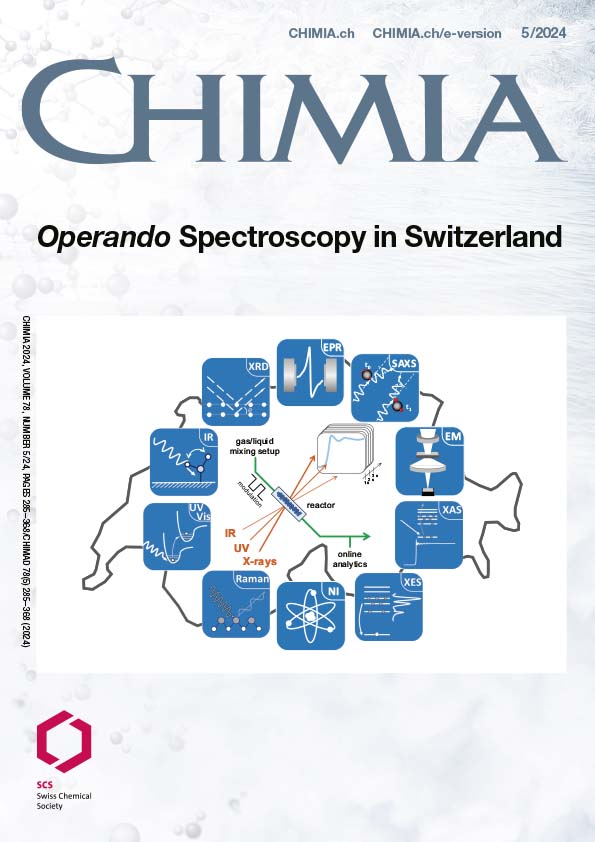X-ray Spectroscopy at the SuperXAS and Debye Beamlines: from in situ to Operando
DOI:
https://doi.org/10.2533/chimia.2024.304PMID:
38822773Keywords:
Catalysis, Electrochemistry, In situ, Operando, Photocatalysis, Photoinduced processes, Pump-probe, XAS, XES, EXAFS, XANESAbstract
Understanding structure–performance relationships are essential for the rational design of new functional materials or in the further optimization of (catalytic) processes. Due to the high penetration depth of the radiation used, synchrotron-based hard X-ray techniques (with energy > 4.5 keV) allow the study of materials under realistic conditions (in situ and operando) and thus play an important role in uncovering structure-performance relationships. X-ray absorption and emission spectroscopies (XAS and XES) give insight into the electronic structure (oxidation state, spin state) and local geometric structure (type and number of nearest neighbor atoms, bond distances, disorder) up to ~5 Å around the element of interest. In this mini review, we will give an overview of the in situ and operando capabilities of the SuperXAS beamline, a facility for hard X-ray spectroscopy, through recent examples from studies of heterogeneous catalysts, electrochemical systems, and photoinduced processes. The possibilities for time-resolved experiments in the time range from ns to seconds and longer are illustrated. The extension of X-ray spectroscopy at the new Debye beamline combined with operando X-ray scattering and diffraction and further developments of time-resolved XES at SuperXAS will open new possibilities after the Swiss Light Source upgrade mid 2025.
Funding data
-
NCCR Catalysis
Grant numbers 180544
Downloads
Published
Issue
Section
License
Copyright (c) 2024 Aram Bugaev, Adam H. Clark, Nina S. Genz, Olga V. Safonova, Grigory Smolentsev, Maarten Nachtegaal

This work is licensed under a Creative Commons Attribution 4.0 International License.







